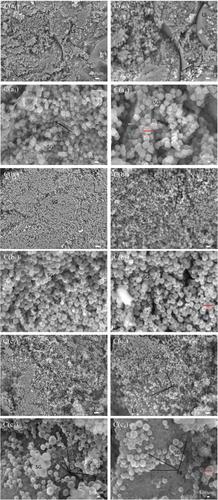Analysis of grain nutrient accumulation and filling characteristics across quinoa varieties with different inflorescence types on the Qinghai plateau
Abstract
Background
This study investigated the changes in total sugar, starch, crude protein, and crude fat content in three quinoa cultivars—Tianma HX, Qingli NO.12, and Qingli NO.9—across various inflorescence types and ripening stages during the filling phase. Additionally, the relationships between nutrient content and filling characteristic parameters, filling days, and grain weight were analyzed. Scanning electron microscopy (SEM) was employed to examine alterations in the shape, quantity, and size of starch grains and proteins throughout the filling period, aiming to elucidate the patterns of nutrient accumulation in quinoa grains.
Results
(1) The nutrient content in the grains of the tested quinoa varieties increased progressively with the number of days post-flowering. However, a decline in crude protein content was observed during the late stage of grain filling. (2) Key parameters influencing nutrient accumulation included the starting potential, filling rate, and active filling time. An extremely positive correlation was found between nutrient content and both filling duration and grain dry weight. (3) SEM analysis revealed that both the quantity and size of starch grains and proteins increased as filling progressed. Starch grains exhibited a polyhedral shape with an approximate diameter of 15 μm, while proteins were observed as filamentous or irregularly branched structures, located between or attached to starch grains. (4) Variations in grain nutrient content among different parts of the same variety and those among different varieties were compared. Early-maturing varieties exhibited higher levels of starch and crude protein, suggesting better overall quality. Additionally, grain nutrient content decreased sequentially from the top to the end of the main panicle within the same variety. (5) Results from principal component analysis indicated that quinoa grains harvested 35–42 days after flowering had superior quality and yield. Among the tested cultivars, Qingli NO.12 demonstrated the most favorable comprehensive performance.
Conclusions
Based on growth period, grain weight, and quality considerations, it is recommended to cultivate quinoa varieties with panicles and medium- to late-maturity in practical production settings.




 求助内容:
求助内容: 应助结果提醒方式:
应助结果提醒方式:


